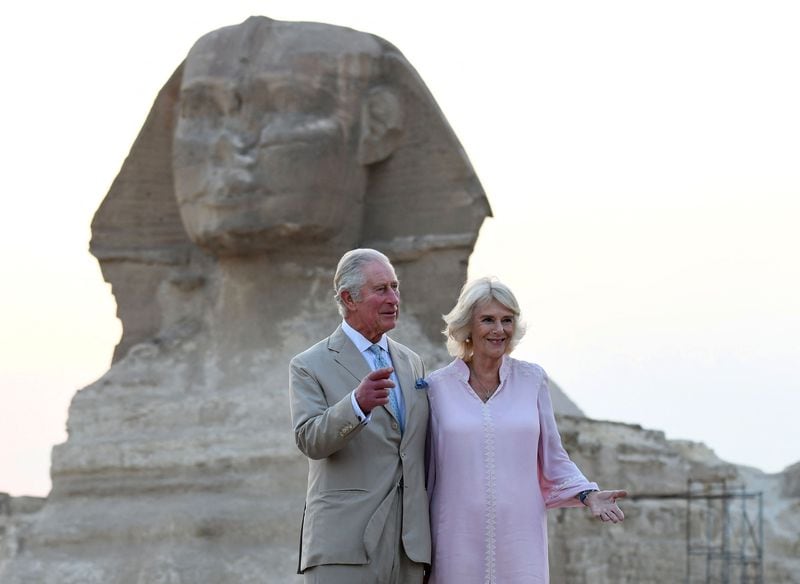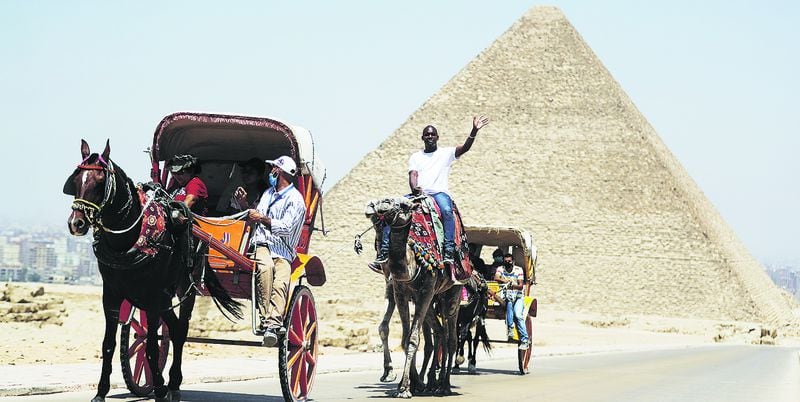A video showing the restoration work on the Menkaoure pyramid, the smallest in Giza, has been harshly criticized on social networks by those who consider it “absurd”. The work, published by the country’s Supreme Council of Antiquities, shows a group of workers aligning granite blocks at the base of the monument.
Since last Friday, social media users have strongly criticized the pyramid restoration project of Menkaure granite (or Mycerino according to the Hellenized name) in Egypt , the smallest of three located in Giza, on the outskirts of Cairo, the country’s capital. The initiative was announced through a video released by the Secretary General of the Supreme Council of Antiquities of Egypt, Mostafa Waziri .
In the video posted Friday by Waziri via Facebook and later broadcast on more social media, showed workers placing granite blocks at the base of the pyramid, located next to the Great Sphinx monument and the largest pyramids in Cheops And Khafre in Giza. The work is expected to last three years and will be “Egypt’s gift to the 21st century world,” said Waziri, who heads the Egyptian-Japanese mission in charge of the project.
According to the archaeologist, the initiative “will allow us to see, for the first time, the pyramid of Menkaure as it was built by the ancient Egyptians.” So he called it “the project of the century ”, but was immediately questioned in the comments by dozens of disgruntled people.
“Impossible!” wrote Egyptologist Monica Hanna. “All that was missing was to add mosaics to the Menkaoure pyramid! When are we going to put an end to the absurdity of the management of Egyptian heritage? “, he asked himself. “All the international principles about renovations prohibit such interventions “, added Hanna, calling on all archaeologists to “mobilize immediately”.
“The original cladding of the pyramid is not granite, and it is a centuries-old disastrous project, not the project of the century,” said one X user, and others, also online, quipped this initiative. “When will the project to straighten the Tower of Pisa be planned?”, asks one of them. “Instead of tiles, why not wallpaper the pyramids? » said another.

When first constructed, the pyramid was covered with pink granite -from the quarries of Aswan- and blocks of white limestone , but over time it has lost part of its coating. It is believed that stone thieves removed them over time. This left the pyramid looking very different from what it did when it was first built. Today, only a few facing stones remain on the exterior walls of the pyramid. The renovation therefore aims restore the original style of the structure by rebuilding the granite layer.
There Pyramid of Menkaoure It is located on the west bank of the Nile, in the Giza Necropolis, Egypt. East the smallest of the three pyramids – Cheops, Khafre and Menkaure – and was built for the pharaoh Menkaure, who reigned from 2490 to 2472 BC. It is believed to have been built around the 2530 BC c. and it is estimated that it took around ten years to build. In addition to these, there are many other smaller pyramids. All three were built at the request of three ancient Egyptian pharaohs around 4,500 years ago, according to the Egyptian Ministry of Tourism and Antiquities.
The intricate decorations of the Menkaoure pyramid tell stories about the lives of Pharaoh Menkaure and at the same time, provide insight into ancient Egyptian culture and beliefs about death and the afterlife.

In this country located at the northeastern tip of Africa, the protection of national heritage It is often the subject of heated debate. The Supreme Council of Antiquities (SCA) is the body under the Egyptian Ministry of Culture, responsible for the conservation, protection and regulation of all antiquities and archaeological excavations in the country.
The recent destruction of entire sections of Cairo’s historic district has sparked powerful mobilizations from civil society, largely excluded from political activity and now focusing most of its struggle with the government on issues of town planning and heritage.
Lately, the debate has focused on the Muslim temple of Abu al-Abbas al-Mursi , from the 15th century, in the coastal city of Alexandria, the second largest in Egypt. Local authorities announced an investigation after a renovation contractor decided to repaint the mosque’s ornate, carved and colorful ceilings white.

According to information from the Egyptian government, the tourism It is an essential element of the country’s economic growth. Under normal conditions, it represents approximately 40% of total contributions from the services sector, 19.3% of foreign exchange and 7% of Gross Domestic Product (GDP) . If we take into account the indirect contribution of tourism-related activities such as hotels and restaurants (3.5%), tourism-related GDP increases to 11.3%. Furthermore, tourism plays a crucial role in job creation, providing work to approximately 12.6% of the working population.
The Menkaure Pyramid is one of the most impressive monuments in Egypt due to its size and complexity. It is a testament to ancient Egypt’s technical skills and an important reminder of its rich history and culture. While it may not be as large or as impressive as its neighbors, today it stands as one of the country’s most iconic heritage sites.
Source: Latercera
I am Robert Harris and I specialize in news media. My experience has been focused on sports journalism, particularly within the Rugby sector. I have written for various news websites in the past and currently work as an author for Athletistic, covering all things related to Rugby news.


